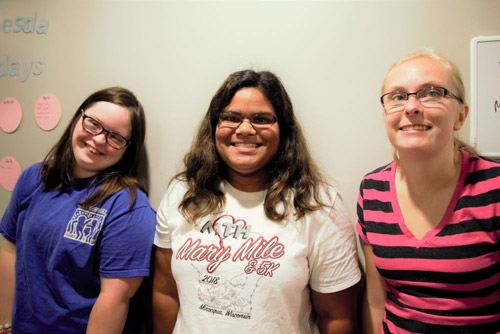Independence and the ability to go into the community is something that many people take for granted. Making a trip to the grocery store can seem like a routine chore for many people, however, people with disabilities may see this one routine chore as many different barriers to overcome. Many questions may arise such as, how will I get there? Will someone help me if I need it? What will happen if…?
When preparing a person with a disability to head into the community, many of these questions can be answered and worked through to find solutions. However just as in life, some of these variables remain unknown and making sure the person with the disability has been prepared enough to handle these situations is also a key factor.
“Everyone has a barrier,” says Samantha Bear, Adult Living Skills Professor and Campus and Community Life Coordinator at AbleLight College. “People with disabilities just have different barriers. By working through these steps, this way they also can have a sense of independence while overcoming their barriers.”
Before getting into the mechanics of going out into the community, the first step is to find out what they like to do and where they would like to go. Do they like to be hands-on with a project? Would they rather be alone? Have them participate in a few different activities and take the time to reflect on whether they liked that activity. Find something they are good at or something they will love doing.
Make a list together of their interests and see where in the community they will be headed. Is it downtown for a walk beside the lake and a visit to the museum, or would they be more comfortable in the suburbs going to see a movie by themselves? Once you have a list of their favorite activities you can determine their destination.
The next step is to practice, practice, practice. What barriers are there that they will need help with? Is it transportation, money, conversational skills or maneuvering through busy sidewalks? Take the time to do the route with them, walk them through the steps and ultimately watch them do it themselves. There are plenty of options to facilitate an independent lifestyle.
Perhaps someone goes with them on the bus to the city center but once there, the person with the disability is ready to meet their friends. In another instance, you could reach out to the movie theater where they would like to go once a week and make sure the same cashier will be there to help with paying for the movie.
People naturally look out for each other in their community. When a person with a disability frequents local spots, they will become a part of this fold and will have a network of people they can reach out to. Independent living empowers people with disabilities. Dr. Adolf D. Ratzka from the Independent Living Institute says that, “Independent Living does not mean that we want to do everything by ourselves or that we do not need anybody or like to live in isolation. Independent Living means that we demand the same choices and control in our every-day lives that our non-disabled brothers and sisters, neighbors and friends take for granted. We want to grow up in our families, go to the neighborhood school, use the same bus as our neighbors, work in jobs that are in line with our education and interests, and raise families of our own. We are profoundly ordinary people sharing the same need to feel included, recognized and loved.”

